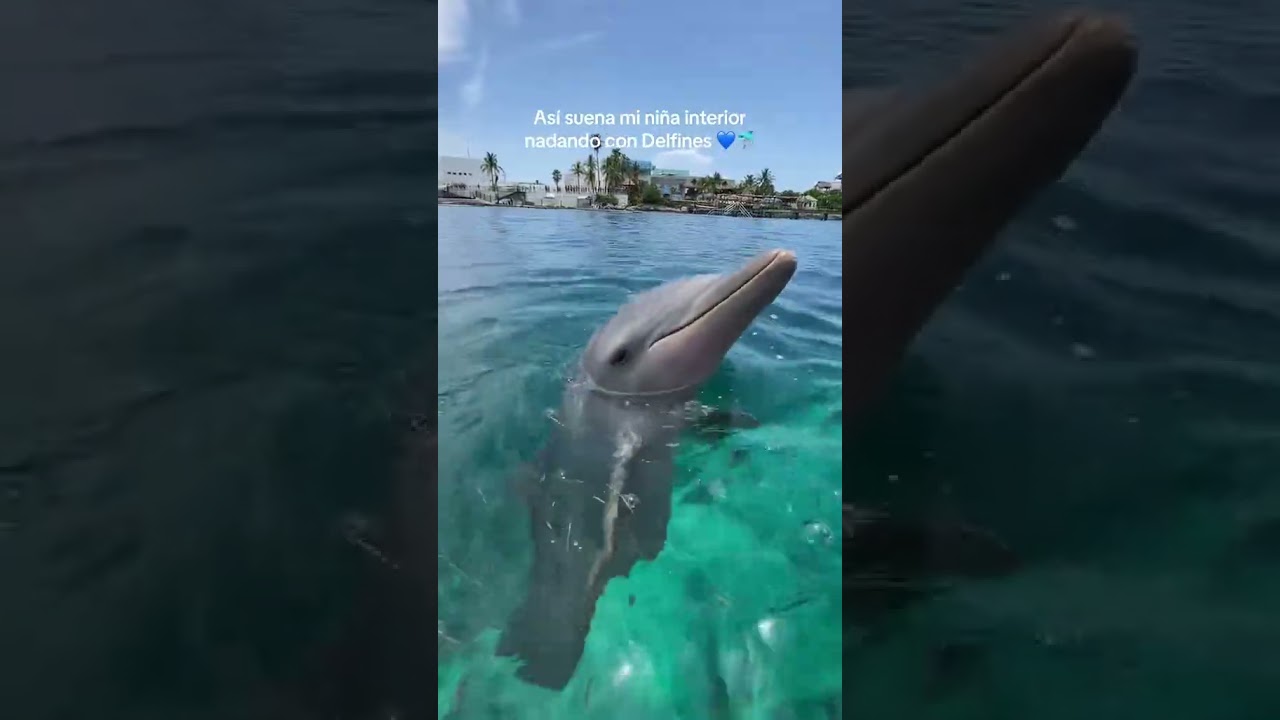- Significance of "Así suena mi niña interior Nadando con Delfines 💙" in wildlife conservation and public awareness.
- Understanding dolphin biology, behavior, and communication within the context of the video.
- Role of zoos and aquariums in promoting dolphin conservation and education.
- Ethical considerations and conservation challenges related to human-dolphin interactions.
- Importance of marine ecosystem protection and the impact of human activities on dolphin populations.
The project "Así suena mi niña interior Nadando con Delfines 💙" aims to bridge the gap between human creativity and the natural world, particularly the lives of dolphins. Through this endeavor, wildlife conservationists and advocates seek to raise public awareness about the intricate nature of dolphins and the essential role that these marine mammals play in their ecosystems. As we explore these themes, the conversation expands to encompass aspects of dolphin biology, behavior, and communication, highlighting their unique adaptations and intelligence.
Dolphins are cetaceans known for their highly developed cognitive abilities, complex social structures, and sophisticated means of communication. In the video "Así suena mi niña interior Nadando con Delfines 💙," viewers are given a rare glimpse into the nuanced world of dolphins, their interactions, and the sounds that embody their existence. This auditory experience aids in understanding how dolphins navigate their aquatic environment and establish social bonds through echolocation and vocalizations, such as clicks, whistles, and pulsed calls.
Zoos and aquariums are crucial in dolphin conservation and education, providing opportunities for people to learn about dolphins in a controlled environment. These institutions contribute to the scientific study of dolphin behavior, physiology, and breeding patterns. They also foster greater public engagement, promoting conservation efforts and supporting rehabilitation programs for injured or stranded marine animals. Through partnerships with conservation organizations, zoos and aquariums help preserve natural habitats and sustain marine biodiversity.
However, interactions between humans and captive dolphins require careful ethical consideration. The welfare of dolphins in captivity is a topic of ongoing debate. It’s essential to evaluate the conditions in which these animals are kept, focusing on environmental enrichment and mental stimulation. Initiatives like "Así suena mi niña interior Nadando con Delfines 💙" encourage a deeper understanding of dolphin welfare, advocating for ethical practices that prioritize the animals’ mental and physical health while providing educational value.
The protection of marine ecosystems is integral to ensuring the long-term survival of dolphin populations. Human activities such as overfishing, pollution, and marine habitat destruction pose significant threats to these ecosystems. Conservation projects like the one discussed can inspire action by illustrating the direct impacts of human commerce and encouraging sustainable practices. Education and public engagement are powerful tools that can drive policy changes and promote practices that protect marine life, ensuring healthy populations for future generations.
In understanding the complexity of dolphins, we recognize the interconnectedness of all life forms within marine ecosystems. Initiatives such as "Así suena mi niña interior Nadando con Delfines 💙" highlight the critical need for biodiversity conservation, drawing attention to the essential role humans play in shaping a sustainable future for the planet. Through continued education, conservation efforts, and ethical consideration, we can work towards a harmonious relationship with our environment, valuing the intricate lives of dolphins and other wildlife.
*****
Source Description
Mi niña interior esta feliz nadando con Delfines 💙🐬✨
#dolphindiscovery #dreamcomestrue #niñainterior #delfines


